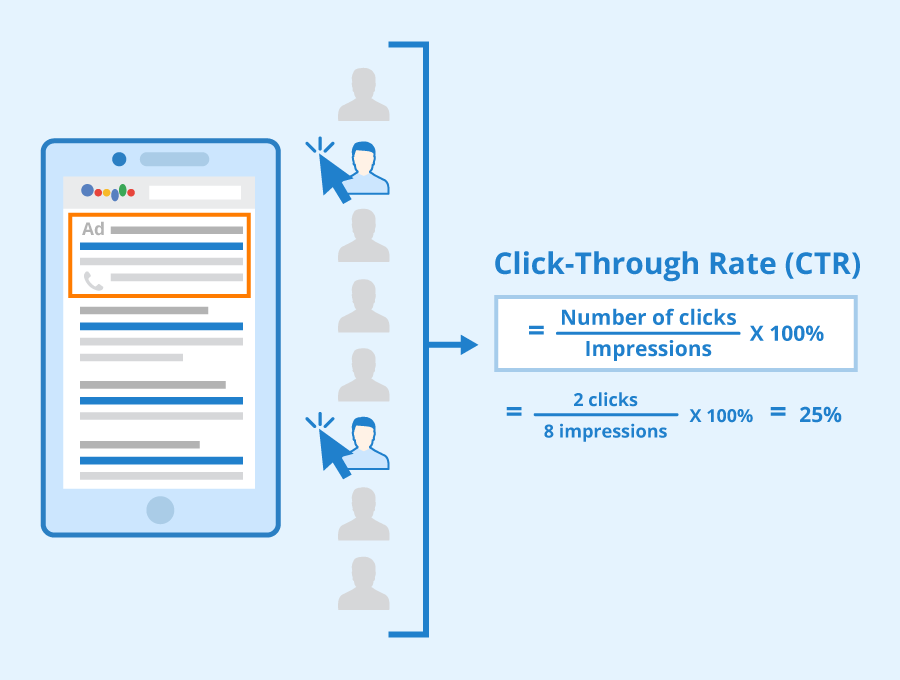Hey there! Ever wondered why some ads just seem to grab your attention while others fade into the background? The secret sauce might just be the Click-Through Rate (CTR). In the world of digital marketing, CTR is like the heartbeat of your campaigns. It tells you how many people are clicking on your ads compared to how many are seeing them. A high CTR means your ad is doing its job, while a low CTR might mean it’s time for a little tweak. So, let’s dive into what CTR is all about and how you can boost it to make your campaigns shine.
Understanding Click-Through Rate (CTR)
Definition of CTR
Click-through rate, or CTR, is a metric that shows the percentage of people who click on your ad after seeing it. It’s calculated by dividing the number of clicks by the number of impressions (how many times your ad is shown) and then multiplying by 100 to get a percentage. Simple, right? But don’t let its simplicity fool you—CTR is a powerful indicator of your ad’s performance.
Importance of CTR
Why should you care about CTR? Well, a high CTR means more people are interested in what you’re offering, which can lead to more traffic, leads, and sales. It’s like having a storefront that not only attracts window shoppers but also gets them to walk in and check out your products. Plus, a good CTR can improve your ad’s quality score on platforms like Google Ads, potentially lowering your cost per click (CPC).
CTR (Click-Through Rate) is an important indicator in Google Ads and Facebook Ads. CTR is the rate of clicks on a link or an ad displayed. CTR is often used to evaluate the effectiveness of an advertising campaign, as well as its revenue and customer reach.
Click-through rate has a direct impact on the quality score and cost per click in your advertising campaign. For each click, you have to pay a certain amount (PPC – Pay Per Click). This means that the higher the CTR, the higher the PPC.
Why CTR is Crucial for Your Website?
Impact on SEO: First off, a high CTR can significantly improve your search engine ranking. When search engines see that users are clicking on your link more often, they interpret it as a sign of relevance and quality. So, a better CTR can help you climb those SERP (Search Engine Results Page) rankings.
Impact on Revenue: Secondly, if you’re running pay-per-click (PPC) campaigns, a higher CTR means more clicks for the same amount of impressions, potentially leading to more sales and revenue. In essence, CTR is a direct indicator of how engaging and compelling your content or ad is to the audience.
The higher the CTR, the better the website, reflecting the performance of the advertising strategy. And showing the interest of customers in the product or service you are advertising. To optimize CTR you need to build a process for researching keywords, content, images, social trends, and user habits.
So What is a good CTR? In each field, there will be a different best ratio to measure CTR. For example, in AdWords, a CTR of 2% or more is considered good. What is a good CTR on Facebook?? For a stable CTR rate, it will be from 4-5%. As for Facebook, the ideal CTR is 0.9%. However, the best CTR rate will depend on each advertising campaign or different SEO times.
How to Calculate Click-Through Rate
Formula for Click-through rate (CTR)
Calculating CTR is straightforward. Here’s the formula:
CTR = (Total Clicks / Total Impressions)×100
So, if your ad gets 50 clicks and 1,000 impressions, your CTR would be:
CTR = (50/1000)×100=5%
Examples of CTR Calculation
Example 1: Let’s break it down with another example. Imagine you have an email campaign that was sent to 2,000 people, and 100 of them clicked on the link in the email. Your CTR would be:
CTR = (100/2000)×100=5%
Easy peasy, right?
Example 2: Let’s say you have a blog post that was viewed 500 times and got 25 clicks on the affiliate link. Your CTR for that link would be:
CTR = (25/500) * 100 = 5%.
Simple, right?
Ad Click-through rate (CTR)
What is Click-through rate in ads?? CTR in advertising is the ratio between the number of times people click on an ad and the number of times that ad is displayed. Formula:
CTR = (Number of ad clicks / Number of individual ad impressions)x100
Meaning: Measures the click-through rate on your ads, commonly used in PPC (Pay-Per-Click) campaigns.
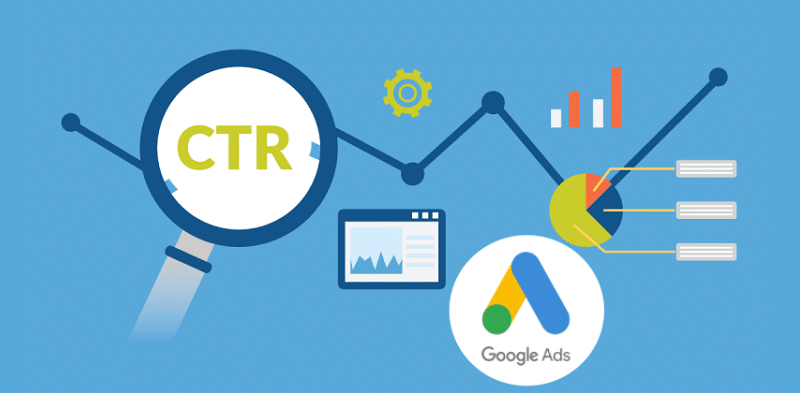
Page Click-through rate (CTR)
Page CTR is a commonly used metric to evaluate the performance of a website or a specific page on a website for direct marketing or advertising purposes.CTR calculation formula of the page:
Page CTR = (Number of clicks on links on page / Number of times the page was viewed or downloaded)*100
To improve your Page CTR, you can optimize your page content, improve your design, and increase the relevance of your content to your site’s goals.
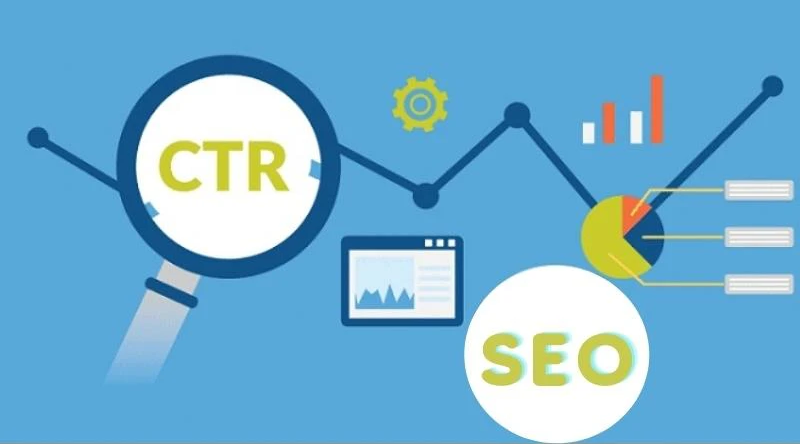
Click-through rate (CTR) of query
This is an important metric in the online advertising and paid search industry. Query CTR measures the click-through rate from queries. Simply put, CTR Queries is a metric that represents the number of people who clicked on your ad compared to the total number of times that ad was shown in search results or on a website.
For example, if you get 20 clicks from 1000 queries, your query CTR would be 2%. This metric is often used to evaluate the performance of advertising campaigns on search platforms like Google Ads.
The formula for calculating Query CTR is:
Query CTR = (Number of clicks on the ad) / (Number of queries reported) * 100
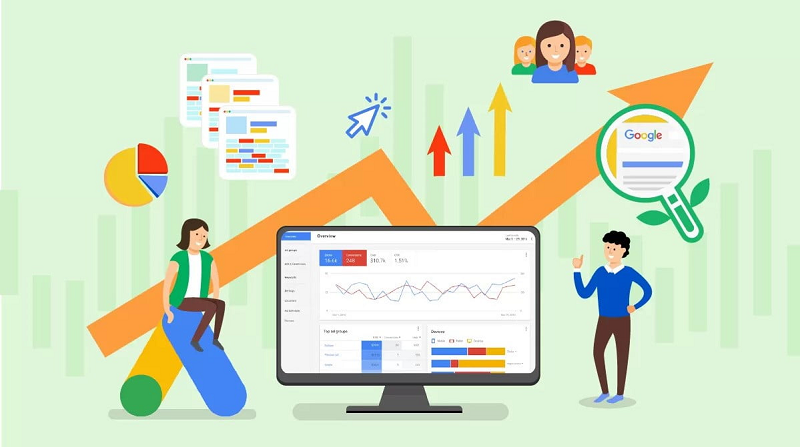
How to Improve Click-Through Rate Effectively?
Relevance of On-page
One of the biggest factors affecting CTR is how relevant your content is to your audience. If your ad speaks directly to their needs and interests, they’re more likely to click. It’s like offering a cold drink on a hot day—people will naturally gravitate towards it.
If your content isn’t relevant to what users are searching for, they’re less likely to click on your link. Always aim to provide valuable, high-quality content that meets user intent.
Research and apply long-tail keywords
Long-tail keywords are more than 3-5 words long and more specific. These keywords are often less competitive but have a higher conversion rate. Instead of using generic keywords. Research and use long-tail keywords related to your product or service for your articles, blogs, and product pages.
Write an optimized and attractive meta-description
Meta-description is an important part of the web page description in search results. To increase Click-through rate, write a compelling and accurate description of your website content. Use your main keywords and emphasize the unique value you provide. Also, keep your meta description under 160 characters to ensure it is fully displayed in search results.
Your meta description is like a mini-ad for your page. A compelling, well-written meta description can entice users to click on your link. Use actionable language and include your target keywords.

Enhancing Visual Appeal
Using High-Quality Images
Images are an important part of visual content on your website. To attract users’ attention and increase conversion rates. CTR optimizes your images. Make sure they are the right size and compress them to speed up your website loading. Use keywords in your image file names and alt tags. To provide relevant information to search engines.
High-quality images can grab attention and make your ad more appealing. Ensure that your images are relevant to your ad content and of high resolution. It’s like adding a splash of color to catch the eye.
Implementing Video Ads
Video ads can be more engaging than static images. They allow you to tell a story and connect with your audience on a deeper level. Short, informative videos can lead to higher CTRs.
URL Optimization
Optimize your URL by using your main keywords and a brief description of the content of the page. Make sure the URL is easy to read, concise, and clearly represents the content of the page. An optimized URL can improve your click-through rate. CTR helps users quickly understand what a page is about before they click.

Content Localization
If your business operates in a specific geographic area. Localize your content to appeal to customers in that area. Use local keywords in your title, meta description, and website content. To increase your visibility in local search results. Also, create content that is culturally, linguistically, and locally relevant. To appeal to your target customers.
Optimize titles and content on Social Media
Optimize the title and content for posts on social networks such as Facebook, Twitter, LinkedIn, Instagram, etc. By using the main keyword and creating an attractive title to attract users’ attention. You can also use attractive images and videos to increase interaction and sharing on social networks.
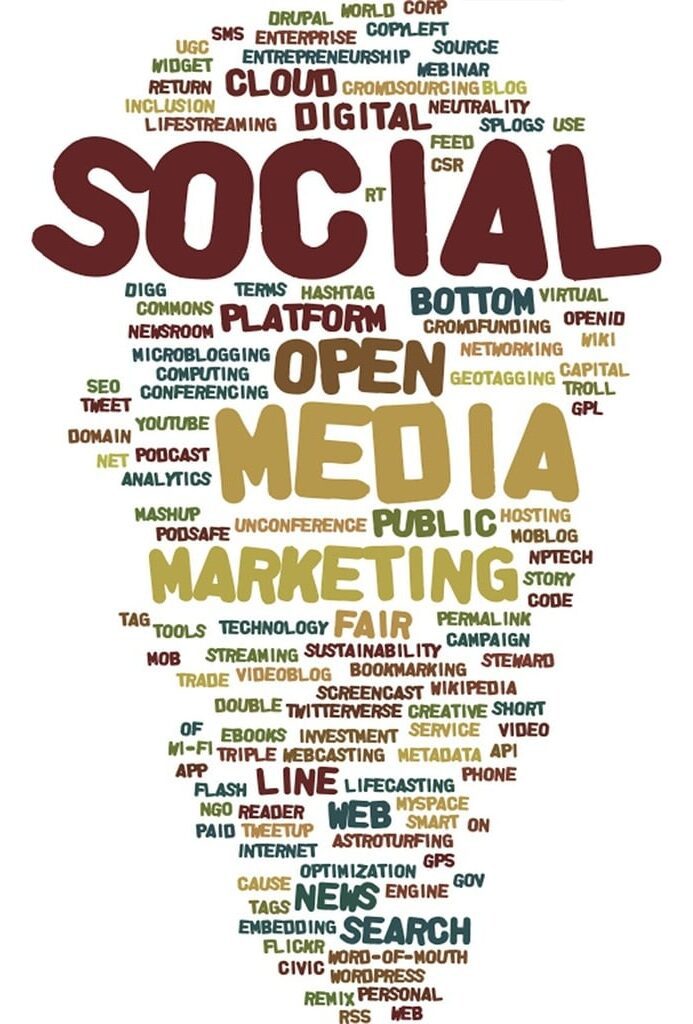
Strategies to Improve Click-Through Rate
Google Adwords and Google Analytics are two important tools for tracking and optimizing CTR your. Use Google Adwords to run online advertising campaigns and track their effectiveness. Monitor Google Analytics to track traffic, bounce rates, and time on site. Based on the data collected, adjust your marketing strategy to improve CTR.
Optimizing Ad Copy
Using Strong Call-to-Actions (CTAs)
A strong CTA is like a friendly nudge that encourages users to take action.
Phrases like “Learn More,” “Sign Up,” or “Get Started” can be very effective. Make sure your CTA is clear and stands out.
Words like “ultimate,” “exclusive,” and “proven” can make your headline more enticing. Don’t be afraid to get a little creative!
A/B Testing Ad Variations
Don’t be afraid to experiment with different versions of your ad. A/B testing allows you to compare two versions to see which one performs better. It’s like trying on different outfits to see which one looks best.
Experimenting with Headlines: Try A/B testing different headlines to see which one performs better. You might be surprised by what resonates with your audience.
Testing Different Visuals: The same goes for visuals. Test different images or videos to see which one gets more clicks. It’s all about finding what works best for your audience.
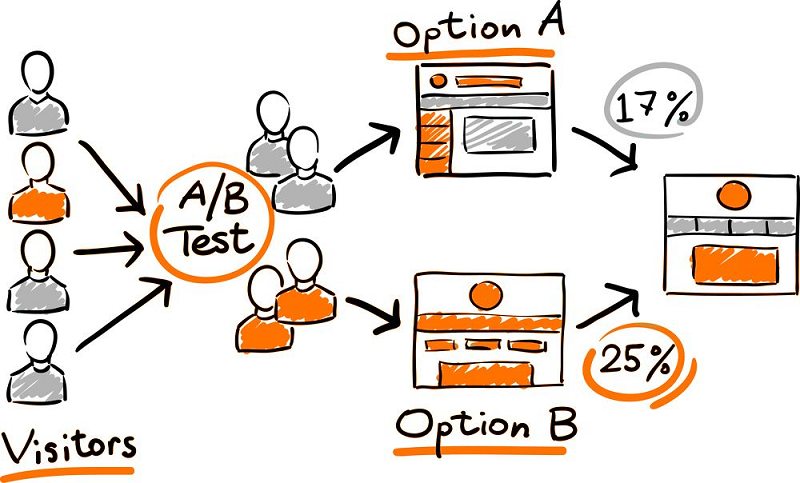
CTR plays an undeniable role in studying user behavior and preferences. In particular, CTR data is an important tool in A/B testing methods. Used as a primary or secondary metric.
For example, when you run an A/B test on a fashion company’s product page. The conversion goal might be the number of completed purchases. While CTR of shipping information may be a secondary indicator. A high CTR on shipping information may indicate that users are interested in shipping.
CTR is an important tool in conversion optimization. It helps determine user behavior and preferences. It also plays an important role as a secondary metric in A/B testing. It helps you have a more comprehensive view of user behavior during the test.
Targeting the Right Audience
Audience Segmentation
Segmenting your audience based on demographics, interests, and behaviors can help you create more targeted and relevant ads. It’s like tailoring a suit to fit perfectly—personalization makes a difference.
Utilizing Retargeting Techniques
Retargeting allows you to reach users who have previously interacted with your website or ads. This can help increase CTR by targeting users who are already familiar with your brand.
Common Mistakes to Avoid
Even the best of us make mistakes. Here are some common pitfalls to avoid.
Ignoring Mobile Users
With more and more people browsing on their phones, it’s crucial to ensure your site is mobile-friendly. A poor mobile experience can tank your CTR.
Overstuffing Keywords
While keywords are important, overstuffing them can make your content look spammy and turn off users. Aim for a natural flow.
Conclusion
Improving your Click-Through Rate is essential for the success of your digital marketing campaigns. By understanding what CTR is, how to calculate it, and implementing effective strategies, you can enhance your ad performance and achieve better results.
Click-through rate is more than just a number; it’s a reflection of how well you’re engaging your audience. By understanding what affects CTR and implementing strategies to improve it, you can boost your SEO, increase your revenue, and ultimately achieve your marketing goals.
Remember, it’s all about making your ads as appealing and relevant as possible to your target audience. So, go ahead and start optimizing your CTR today!
Frequently Asked Questions (FAQs)
What is a good CTR?
A good CTR can vary by industry, but a general benchmark is around 2-3% for search ads. However, for display ads, a CTR of 0.5-1% is considered average. It’s important to benchmark against your own past performance and industry standards.
How often should I check my CTR?
It’s a good idea to monitor your CTR regularly, at least once a week. This allows you to ensure your campaigns are performing well. Regular analysis helps you stay on top of trends and make necessary adjustments.
Can I improve CTR without changing my ad budget?
Yes, you can improve CTR by optimizing your ad copy, targeting the right audience, and enhancing the visual appeal of your ads without increasing your budget. It’s all about making smart adjustments.
Can CTR affect my SEO ranking?
Absolutely! A higher CTR can improve your SEO ranking as it signals to search engines that your content is relevant and engaging.
Why is CTR important for SEO?
CTR is important for SEO because it indicates how well your content is resonating with users. A higher CTR can lead to better rankings in search engine results, as it signals to search engines that your content is relevant and engaging.
What tools can help me track and analyze CTR?
Tools like Google Analytics, Google Ads, Ahrefs, and SEMrush are great for tracking and analyzing CTR. They provide detailed insights into your ad performance and help you identify areas for improvement.
How does CTR differ between industries?
CTR can vary widely between industries. For example, the average CTR for the finance industry might be different from that of the fashion industry. It’s important to benchmark against industry standards.
